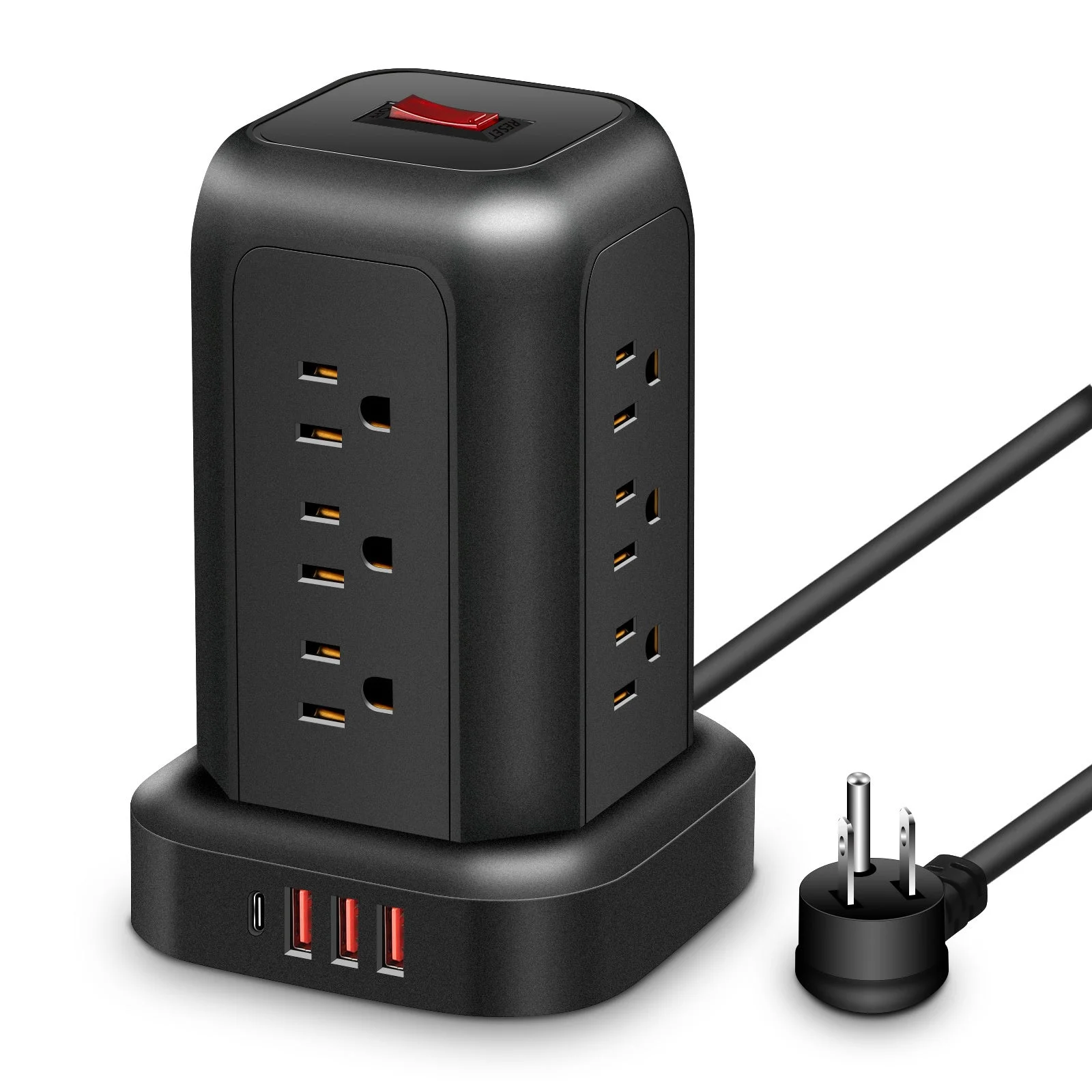Introduction
In today’s fast-paced world, the demand for quick and efficient charging has grown exponentially. With the proliferation of smartphones, tablets, laptops, and wearables, having a reliable and fast charging solution has become a necessity rather than a luxury. Fast charging technology is revolutionizing the way we power our devices, reducing the downtime associated with recharging and increasing the overall convenience for users. This blog delves into the intricacies of fast charging, its evolution, technical workings, and future potential in the electronics industry.
The Evolution of Charging Technology
In the early days of consumer electronics, devices were powered by basic batteries that took hours to recharge. With advancements in battery technology, particularly lithium-ion batteries, devices became more powerful, but they also required more energy. Traditional charging methods were slow, leading to increased frustration for users who needed their devices to be functional quickly.
The introduction of fast charging technology addressed these concerns. Companies like Qualcomm, Apple, and Samsung began integrating fast charging standards into their devices, allowing users to gain significant battery power within a short period. The rapid adoption of fast charging across the electronics industry signified a shift in consumer expectations: charging time became a critical component of a device’s usability.
The introduction of fast charging technology addressed these concerns. Companies like Qualcomm, Apple, and Samsung began integrating fast charging standards into their devices, allowing users to gain significant battery power within a short period. The rapid adoption of fast charging across the electronics industry signified a shift in consumer expectations: charging time became a critical component of a device’s usability.
Understanding Fast Charging Technology
At its core, fast charging technology involves increasing the amount of electrical power sent to the device’s battery. Traditional chargers operate at 5 watts (W), but fast chargers can operate at much higher wattages, often between 15W to 120W, depending on the device and the charging technology used.
How Fast Charging Works:
Voltage and Current: Fast charging increases the voltage, current, or both. This allows more energy to be delivered to the battery in a shorter amount of time.
Phases of Charging: Fast charging usually works in two phases. In the first phase, a large amount of current is sent to the battery, quickly charging it to about 50-70%. In the second phase, the charging rate slows down to prevent overheating and ensure the battery’s longevity.
For instance, Qualcomm’s Quick Charge technology boosts the voltage, allowing compatible devices to receive up to 27W of power. Similarly, USB Power Delivery (USB-PD), a more universal fast-charging standard, can provide up to 100W of power, making it suitable for charging larger devices like laptops.
How Fast Charging Works:
Voltage and Current: Fast charging increases the voltage, current, or both. This allows more energy to be delivered to the battery in a shorter amount of time.
Phases of Charging: Fast charging usually works in two phases. In the first phase, a large amount of current is sent to the battery, quickly charging it to about 50-70%. In the second phase, the charging rate slows down to prevent overheating and ensure the battery’s longevity.
For instance, Qualcomm’s Quick Charge technology boosts the voltage, allowing compatible devices to receive up to 27W of power. Similarly, USB Power Delivery (USB-PD), a more universal fast-charging standard, can provide up to 100W of power, making it suitable for charging larger devices like laptops.
Popular Fast Charging Technologies
Qualcomm Quick Charge:
Qualcomm’s Quick Charge is one of the most widely adopted fast charging technologies. Its latest version, Quick Charge 5, can deliver up to 100W of power, capable of charging a device to 50% in just 5 minutes under optimal conditions. Quick Charge works by increasing both voltage and current, and is backward compatible with earlier versions of the standard.
USB Power Delivery (USB-PD):
USB-PD is a more universal standard and is widely used in a variety of devices, from smartphones to laptops. USB-PD can deliver up to 100W, making it versatile for different device sizes and power needs. One of its unique features is that it dynamically adjusts power levels based on the device’s charging capabilities.
Apple Fast Charging:
Apple has developed its own fast charging standard for iPhones and iPads. Using a USB-C to Lightning cable, Apple’s fast charging provides up to 18W of power, allowing iPhones to charge up to 50% in 30 minutes. Apple has also embraced USB-PD in its MacBooks and iPads, which supports higher wattage charging.
Oppo SuperVOOC and OnePlus Warp Charge:
SuperVOOC by Oppo and Warp Charge by OnePlus are among the fastest charging technologies available today. SuperVOOC can deliver 50W of power, and Warp Charge can deliver up to 65W, allowing users to charge their devices to 100% in less than 30 minutes. These technologies use a combination of high current and sophisticated cooling systems to prevent overheating.
Qualcomm’s Quick Charge is one of the most widely adopted fast charging technologies. Its latest version, Quick Charge 5, can deliver up to 100W of power, capable of charging a device to 50% in just 5 minutes under optimal conditions. Quick Charge works by increasing both voltage and current, and is backward compatible with earlier versions of the standard.
USB Power Delivery (USB-PD):
USB-PD is a more universal standard and is widely used in a variety of devices, from smartphones to laptops. USB-PD can deliver up to 100W, making it versatile for different device sizes and power needs. One of its unique features is that it dynamically adjusts power levels based on the device’s charging capabilities.
Apple Fast Charging:
Apple has developed its own fast charging standard for iPhones and iPads. Using a USB-C to Lightning cable, Apple’s fast charging provides up to 18W of power, allowing iPhones to charge up to 50% in 30 minutes. Apple has also embraced USB-PD in its MacBooks and iPads, which supports higher wattage charging.
Oppo SuperVOOC and OnePlus Warp Charge:
SuperVOOC by Oppo and Warp Charge by OnePlus are among the fastest charging technologies available today. SuperVOOC can deliver 50W of power, and Warp Charge can deliver up to 65W, allowing users to charge their devices to 100% in less than 30 minutes. These technologies use a combination of high current and sophisticated cooling systems to prevent overheating.
Safety Concerns with Fast Charging
One of the primary concerns with fast charging is heat generation. The faster a battery is charged, the more heat it produces. Excessive heat can reduce a battery’s lifespan and even pose safety risks. To mitigate these risks, modern fast-charging technologies incorporate several safety features:Temperature Control: Many fast chargers and devices come equipped with sensors to monitor the battery’s temperature. If the battery overheats, the charging speed is automatically reduced to prevent damage.Smart Charging Protocols: Technologies like USB-PD and Qualcomm Quick Charge use smart communication between the charger and the device to adjust the voltage and current dynamically. This ensures that the battery receives the optimal amount of power without overloading it.Battery Management Systems (BMS): Modern devices have advanced BMS that monitor battery health and adjust charging speeds based on various factors such as temperature, battery wear, and usage patterns.
The Future of Fast Charging Technology
The future of fast charging is bright, with several promising developments on the horizon:
Wireless Fast Charging:
Although wireless charging has been around for a few years, it has traditionally been slower than wired charging. However, new advancements like MagSafe from Apple and Xiaomi’s Mi Air Charge are pushing the boundaries of wireless charging speeds. Xiaomi’s technology promises to deliver 80W of wireless power, rivaling wired fast chargers.
Graphene Batteries:
One of the limitations of current lithium-ion batteries is that they degrade over time, especially with repeated fast charging. Graphene batteries, which are currently in development, promise faster charging times, greater energy density, and longer battery life. These batteries could revolutionize the fast charging landscape by allowing devices to charge in minutes without sacrificing longevity.
Bidirectional Charging:
Also known as reverse charging, bidirectional charging allows devices to charge one another. This is particularly useful for smaller devices like wireless earbuds or wearables. While some smartphones already have this feature, future developments in bidirectional fast charging could make it more efficient, allowing one device to charge another at faster speeds.
Sustainable Charging Solutions:
As the world becomes more environmentally conscious, there’s a growing focus on green charging solutions. This includes chargers that are more energy-efficient, use renewable energy sources, or incorporate recycled materials in their design. The push for standardized charging ports (such as USB-C) is also part of this effort, reducing electronic waste by making chargers compatible across multiple devices.
Wireless Fast Charging:
Although wireless charging has been around for a few years, it has traditionally been slower than wired charging. However, new advancements like MagSafe from Apple and Xiaomi’s Mi Air Charge are pushing the boundaries of wireless charging speeds. Xiaomi’s technology promises to deliver 80W of wireless power, rivaling wired fast chargers.
Graphene Batteries:
One of the limitations of current lithium-ion batteries is that they degrade over time, especially with repeated fast charging. Graphene batteries, which are currently in development, promise faster charging times, greater energy density, and longer battery life. These batteries could revolutionize the fast charging landscape by allowing devices to charge in minutes without sacrificing longevity.
Bidirectional Charging:
Also known as reverse charging, bidirectional charging allows devices to charge one another. This is particularly useful for smaller devices like wireless earbuds or wearables. While some smartphones already have this feature, future developments in bidirectional fast charging could make it more efficient, allowing one device to charge another at faster speeds.
Sustainable Charging Solutions:
As the world becomes more environmentally conscious, there’s a growing focus on green charging solutions. This includes chargers that are more energy-efficient, use renewable energy sources, or incorporate recycled materials in their design. The push for standardized charging ports (such as USB-C) is also part of this effort, reducing electronic waste by making chargers compatible across multiple devices.
Conclusion
Fast charging technology has dramatically improved the user experience in modern electronics, minimizing the downtime associated with recharging and allowing users to stay connected for longer. As technology continues to advance, we can expect even faster, safer, and more efficient charging solutions in the near future. Whether it’s through the development of new battery technologies or innovations in wireless charging, the future of fast charging is set to transform the way we power our devices.
For consumers, it’s essential to understand the capabilities and limitations of fast charging, ensuring they use compatible chargers and maintain battery health. As the electronics industry continues to evolve, staying updated on these developments will be crucial for both users and manufacturers alike.
For consumers, it’s essential to understand the capabilities and limitations of fast charging, ensuring they use compatible chargers and maintain battery health. As the electronics industry continues to evolve, staying updated on these developments will be crucial for both users and manufacturers alike.




